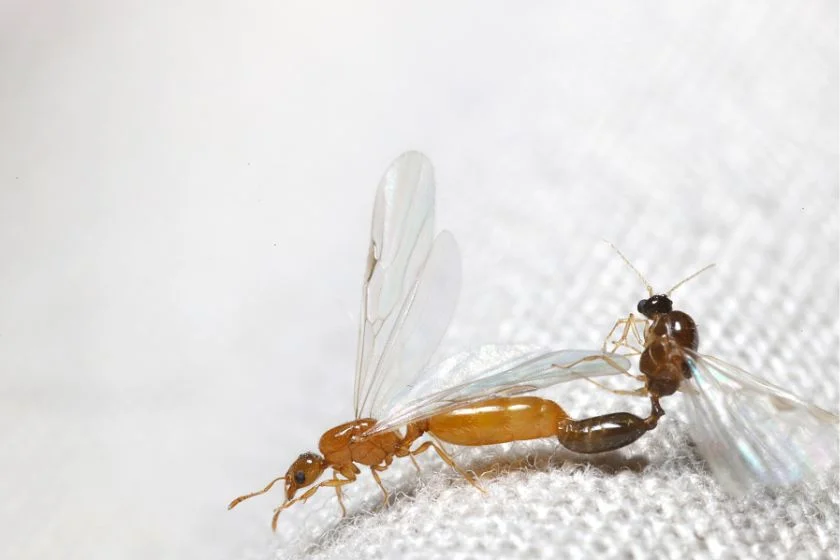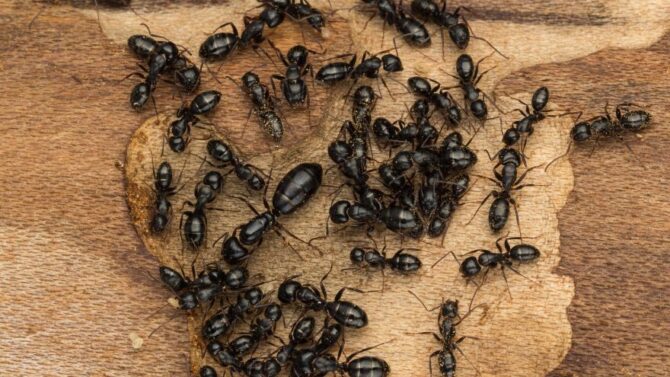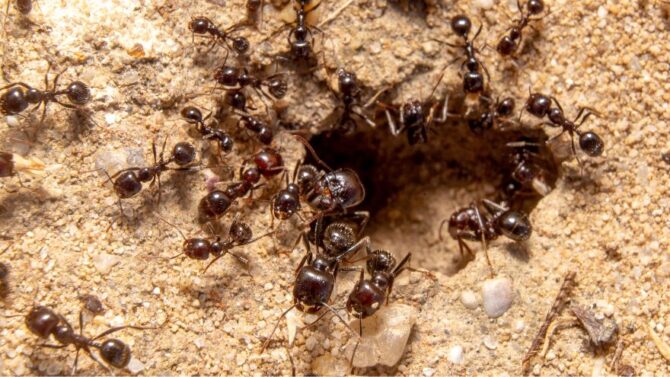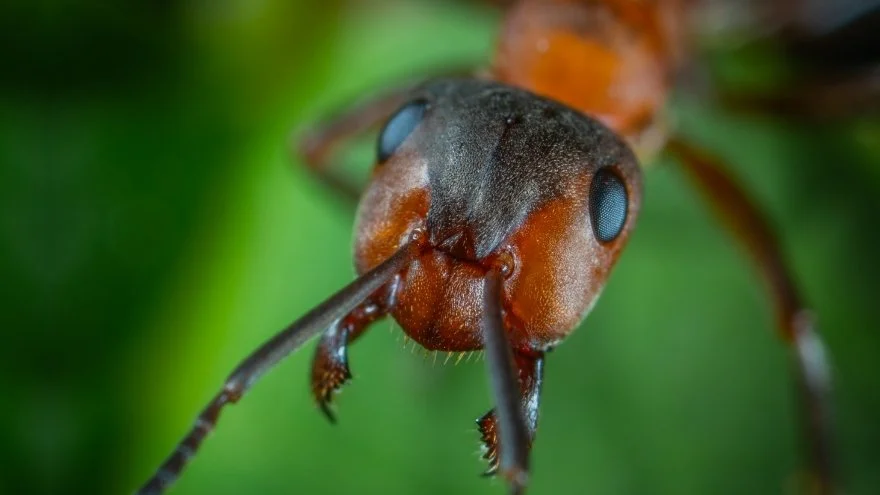There are different species of ants with more than tens of thousands in population worldwide.
They conform to a social hierarchy characterized by a caste system with the queen occupying an important position. Her primary duty is to lay eggs.
She mates only once in her lifetime and uses the sperm from her first mating to fertilize her eggs selectively throughout her lifetime. Given her importance, one has to wonder how are queen ants born or how they came about.
Queen ants lay eggs and fertilize some while leaving others unfertilized. The unfertilized eggs develop into fertile males known as drones, while the fertilized eggs develop into infertile female workers, with some as soldiers.
If a set of larvae from the fertilized eggs are fed more or nourished well, they develop into princesses or future queen ants.
How a larva from a fertilized egg is nourished or fed determines if such a larva will result in a future queen ant.
However, some species of ants deviate from this behavior. Harvester ants, for instance, choose their queen while it is still an egg.
How Are Queen Ants Born?

When the ant eggs hatch, three kinds of progenies emerge: the fertile males, the infertile female workers, and the princesses or the virgin queens.
The males emerge from the deliberately unfertilized eggs of the queen. The infertile females emerge from the fertilized eggs of the queen.
Larvae of fertilized eggs that were nourished and fed well become future queens. However, harvester ants do not conform to this behavior; they instead select their queen while still in the egg phase.
Genetics is a crucial factor in this aspect. Some pupae are born with the ILP2 gene expressed to a great extent, while in some pupae, the gene is barely expressed.
Pupae with high ILP2 gene absorb more nutrients in their body than pupae with fewer ILP2 gene. Ants in their larval stage have their ILP2 genes suppressed by signals.
Therefore, only pupae with the ILP2 gene well expressed get to reproduce. This leverage enables such ants to turn into queens.
Also, in times of drought or low food supply, workers will choose not to feed some eggs better to save resources for the colony’s survival. Consequently, stalling the queen development process.
Therefore, for ants, the decisive factor of becoming a queen is not as simple as marrying a prince. An ant must have the right gene expressed and be born at a suitable time and place.
Dive Deeper: The Surprising Reasons Why There Is No King Ant.
How Do Ants Become Queens?

Ants that develop into princesses are born with wings. They aren’t immediately considered queens as they have yet to mate with a male and have their colonies.
In addition to being called princesses, they are also considered virgin queens. When they become sexually mature, they engage in a nuptial flight, an important reproduction phase that finally transforms them into queens.
During a nuptial flight, the queen mates with a male, after which she lands and starts her colony. The context of the nuptial flight involves three stages:
- Before the nuptial flight
- During the nuptial flight
- After the nuptial flight
Before the Nuptial Flight
An ant colony produces princesses and male ants, both winged. Male ants and infertile female workers develop from unfertilized and fertilized eggs, respectively.
However, if a fertilized egg receives special attention from workers, it develops into a virgin queen. Male ants are one-time sexual agents.
Both princesses and male ants live at their parent colony until they mature and conditions are right for a nuptial flight.
Occasionally, different colonies of the same ant species utilize certain environmental signs to harmonize the release of princesses and males to mate with partners from other colonies to curtail inbreeding.
During the Nuptial Flight
Males and females scatter evenly to reduce inbreeding by utilizing outcrossing. The female releases chemicals that attract males to her.
However, she flies away quickly, enabling only the fastest males to mate with her. Mating occurs during this flight.
A queen can mate with several males, storing their sperm in her special organ. She uses this sperm throughout her lifetime to fertilize millions of her eggs.
After the Nuptial Flight
Since males are one-time sexual agents, they die mating with queens. After mating, the queen lands and removes her wings. She finds a new colony and subsequently lays her eggs.
She nurses the first set of broods alone. Most eggs develop into workers whose sole responsibility is taking care of the queen and feeding her.
After the emergence of the first workers, the queen assumes the sole responsibility of continuously laying eggs that hatch into larvae. The majority of these eggs turn into workers.
What is the Duty of a Queen in a Colony?
Despite having the royal title “queen.” Queens are not in charge of their colonies. They have no authority over the workers. Instead, every colony member is driven by instinct to work for the colony to thrive.
The workers bring food to the queen and take care of her, which are the privileges she enjoys.
Queen ants are the most protected members of their colonies. They typically stay deep within their nests for their safety.
Queen ants have the sole responsibility of flourishing the colony. When she attains sexual maturity, she leaves her birth nest and mates with male ants, storing their sperm in her organ.
She finds a suitable place and builds a nest, laying eggs and tendering them for them to hatch.
She spends the rest of her life laying eggs in this nest. A queen can lay many eggs from thousands to millions throughout her lifetime.
How Long Does a Queen Ant Live?
Queen ants live long, longer than other members of their colonies, though lifespan varies according to specie. Some queens have been known to live for over ten years, and some even thirty years.
The longevity of queen ants is good for their colonies because no colony can survive without a queen. Once there is no queen to lay eggs, a colony will crash.
Despite queen ants not exerting any form of authority over the workers, their life is crucial for the survival of their colonies.
In the event of the death of a queen, the ants would not survive, unfortunately. The workers can only survive for a few months before the colony dies off, given the workers’ inability to reproduce.
Since there is no queen to lay eggs, there are no eggs to replace the dead workers. Consequently, the colony dies off.
How is the Queen Ant Different From Other Ants in Her Colony?

The queen ant is unique in that she plays a crucial role on which the colony’s survival depends.
She spends most of her lifetime laying eggs in the colony, which is a very important role. Notwithstanding, other ant castes in the colony perform important roles too.
The workers tend to the queen, look for food and clean the colony, the soldiers protect the colony, the drones (males) provide sperm for fertilization, and the princesses are the future queens.
Of course, the queen-oriented civilization does not apply to every ant species. Some species have multiple queens, which gives them the advantage of the quick expansion.
Additional Facts About Queen Ants
- In all the ant species, the queen will strive to be the last ant standing in the event of a threat or attack on the colony.
- The majority of the ants that are sighted are female workers.
- Although the queen has a royal title, she doesn’t command the colony. She is not an authority figure in the colony. The workers only clean her and bring food to her. Just like every other caste in the colony, she is simply performing her duty for the common good of the colony.
Frequently Asked Questions
Does feeding influence the development of an egg into a queen?
Yes. Feeding larvae from fertilized eggs provides leverage for such larvae to develop into queens. Some would argue that feeding has more of an influence than genetics.
Does nourishment or feeding influence the development of an egg into a queen?
When a queen ant lays eggs, she selectively fertilizes them. The eggs or pupae that would later become the queens are the ones that are well nourished or properly fed. How they are being fed makes the ants develop into two distinct groups of workers and queens, which may seem unusual but are well-founded.
Do all colonies have queens?
Yes, every colony has a queen, regardless of the species of ant. Some ant species have multiple queens in their colonies.
How does a queen ant look?
Anatomically, there is not much difference between a queen and a worker. Queen ants are not usually seen because they spend most of their lives laying eggs inside their nests. A queen is typically larger than the males and workers, having most of the same body parts. She has a larger gaster too. Also, half of her body is made up of her thorax.
Conclusion
The queen ant’s role is crucial for the colony’s survival. Without her, the colony will not thrive.
And as much as she is called a queen, she is not the monarch of the colony; neither does she decide what will happen in the colony.
Instead, just like every other ant, she is striving for the common good of the colony.





